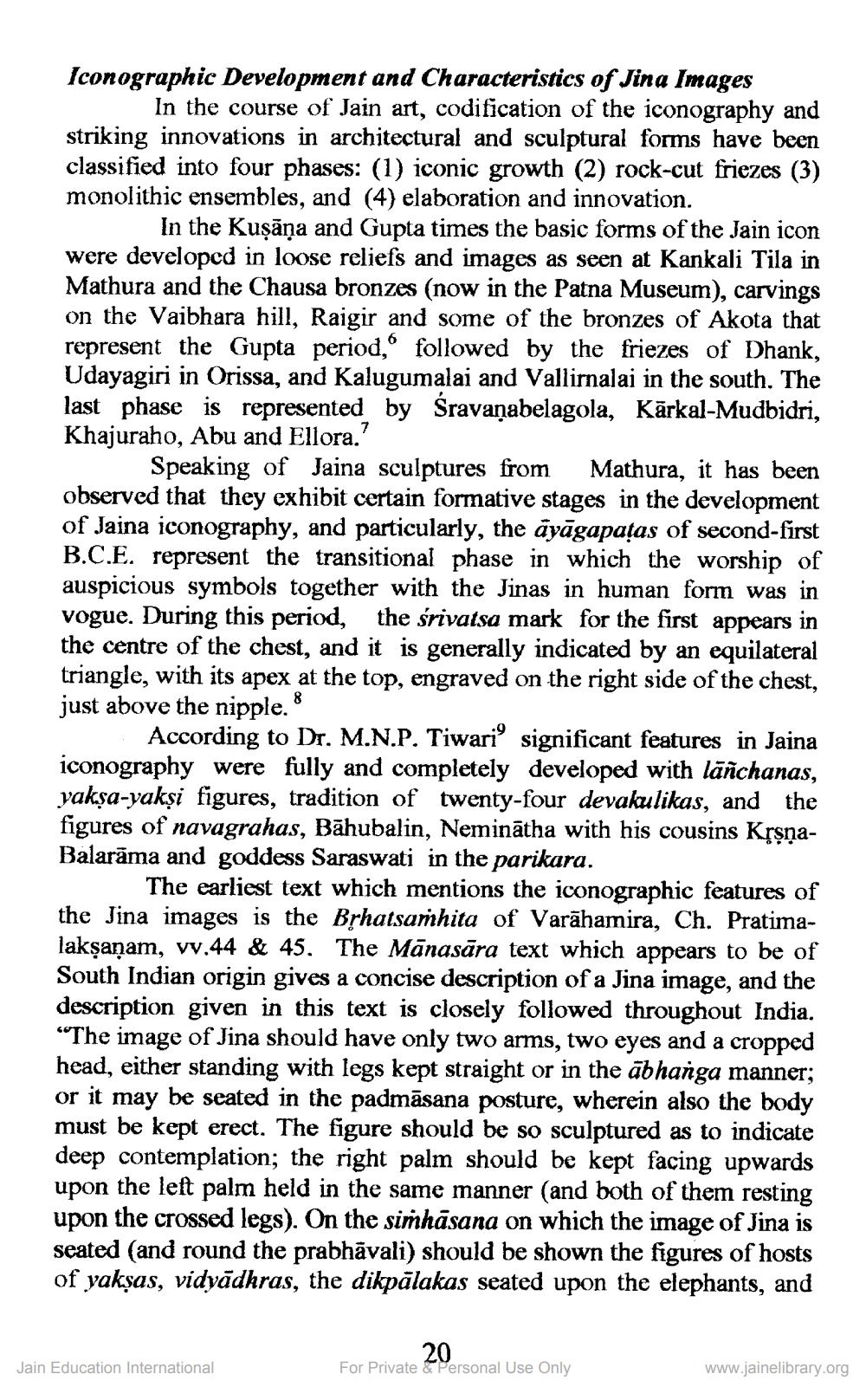________________
Iconographic Development and Characteristics of Jina Images
In the course of Jain art, codification of the iconography and striking innovations in architectural and sculptural forms have been classified into four phases: (1) iconic growth (2) rock-cut friezes (3) monolithic ensembles, and (4) elaboration and innovation.
In the Kuṣāņa and Gupta times the basic forms of the Jain icon were developed in loose reliefs and images as seen at Kankali Tila in Mathura and the Chausa bronzes (now in the Patna Museum), carvings on the Vaibhara hill, Raigir and some of the bronzes of Akota that represent the Gupta period, followed by the friezes of Dhank, Udayagiri in Orissa, and Kalugumalai and Vallirnalai in the south. The last phase is represented by Śravaṇabelagola, Kārkal-Mudbidri, Khajuraho, Abu and Ellora.'
6
Speaking of Jaina sculptures from Mathura, it has been observed that they exhibit certain formative stages in the development of Jaina iconography, and particularly, the ayagapaṭas of second-first B.C.E. represent the transitional phase in which the worship of auspicious symbols together with the Jinas in human form was in vogue. During this period, the śrivatsa mark for the first appears in the centre of the chest, and it is generally indicated by an equilateral triangle, with its apex at the top, engraved on the right side of the chest, just above the nipple."
8
According to Dr. M.N.P. Tiwari significant features in Jaina iconography were fully and completely developed with lañchanas, yakṣa-yakşi figures, tradition of twenty-four devakulikas, and the figures of navagrahas, Bāhubalin, Neminatha with his cousins KṛṣṇaBalarama and goddess Saraswati in the parikara.
The earliest text which mentions the iconographic features of the Jina images is the Bṛhatsamhita of Varāhamira, Ch. Pratimalakṣaṇam, vv.44 & 45. The Manasara text which appears to be of South Indian origin gives a concise description of a Jina image, and the description given in this text is closely followed throughout India. "The image of Jina should have only two arms, two eyes and a cropped head, either standing with legs kept straight or in the abhanga manner; or it may be seated in the padmāsana posture, wherein also the body must be kept erect. The figure should be so sculptured as to indicate deep contemplation; the right palm should be kept facing upwards upon the left palm held in the same manner (and both of them resting upon the crossed legs). On the simhasana on which the image of Jina is seated (and round the prabhavali) should be shown the figures of hosts of yakṣas, vidyadhras, the dikpalakas seated upon the elephants, and
Jain Education International
20
For Private & Personal Use Only
www.jainelibrary.org




